How Can Energy Access Explorer Support Jharkhand’s Development Objectives?
by , e -
The need for a spatial planning tool
Most energy planning exercises focus on the supply side. WRI’s Energy Access Explorer (EAE) provides additional demand side data to inform supply side decision-making. Planning for energy access must be demand-driven and informed by nuanced settlement characteristics such as resource availability, socio-economic indicators, and so on. And this is where EAE becomes relevant.
EAE is an online, open-source, interactive, geospatial platform that will provide an opportunity to visualize energy, health and education indicators, and aid decision-making to accelerate development of the state. The platform will aid a variety of stakeholders, including those working in the energy sector (the electricity utility and renewable energy development agencies), healthcare, education, and other development service delivery sectors, that represent government, grassroots organizations, social enterprises as well as social investors and donors. The platform will also provide time-series data to inform temporal context as to why the indicators are behaving in a certain manner and how they can be interpreted more effectively.
Why Jharkhand, India
The formation of Jharkhand as a distinct state in 2000 was strongly tied to resource politics. 29 percent of India’s coal reserves are found in the state. From an energy planner’s perspective, Jharkhand has an ideal confluence of geological characteristics – plentiful coal, abundant rivers and waterways, and relatively large expanses of unsettled land. However, levels of electrification of key institutions and overall development indicators tell a different story. Jharkhand accounts for over 40 percent of India’s mineral resources, and yet, four out of ten people in the state are multi-dimensionally poor, and nearly half of the state’s population (48 percent) are deprived in nutrition.
While household electrification has witnessed impressive gains across India in the past decade, reaching nearly every village in the country, Jharkhand’s story is even more incredible. Just over a third (37 percent) of rural households were electrified in 2017. And this jumped to almost full rural household electrification in just under three years – by 2019. At the same time, over half (54 percent) of the health facilities and half (50 percent) of the schools are electrified, thus far.
While Health Sub-Centres (HSCs) are the first point of contact with the community, they are also some of the least electrified health facilities (half of them remain unelectrified). Still, according to the Indian Public Health Standards Guidelines, they are responsible for services such as immunisation, functioning toilets, residential quarters for Auxiliary Nurse Midwifes (ANMs), autoclaving and sterilising equipment, and so on. All of which require some degree of reliable electricity to function.
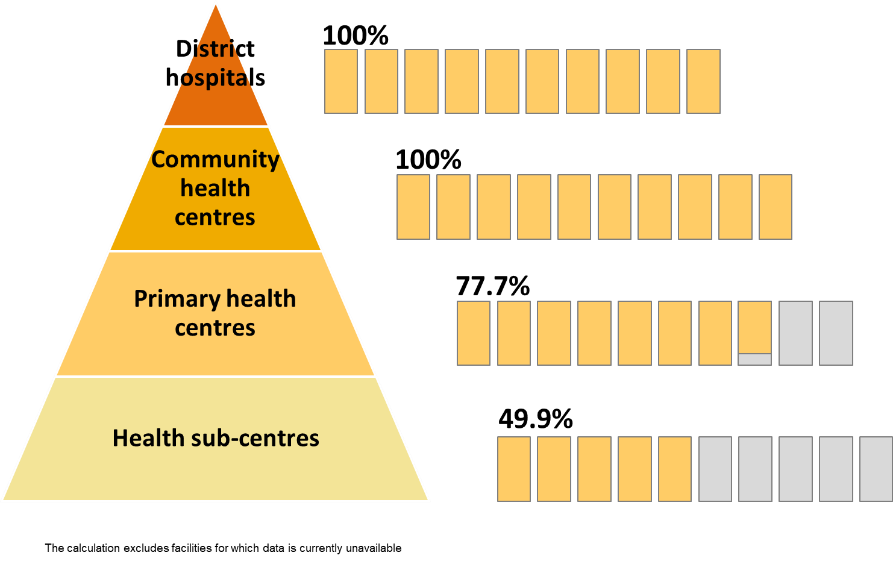
Below, we demonstrate three examples of how Energy Access Explorer can support evidence-based decision making on enhancing access to reliable electricity for institutions.
Electrified health centres are closer to critical infrastructure such as road networks
On an average, an unelectrified Primary Health Centre (PHC) is nearly a kilometre farther from a major road network than an electrified PHC. Road networks are often essential infrastructure to access energy services—they also determine how easily facilities can be serviced to maintain their electricity infrastructure. While public facilities are meant to be the primary service delivery units for communities, it is important to understand how accessible these are.
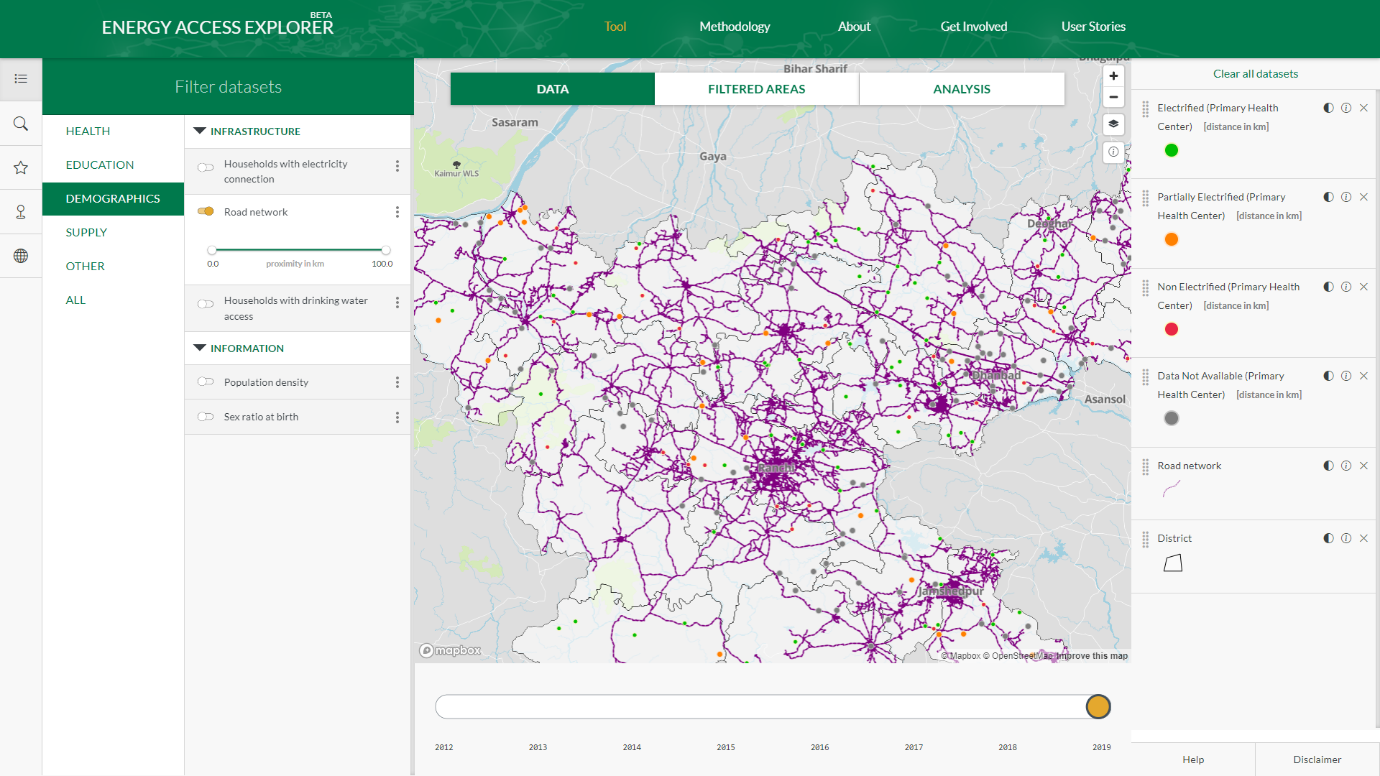
We observe that on average, electrified PHCs are closer to road networks than unelectrified ones.
| Type of PHC | Average distance from the road network |
|---|---|
| Unelectrified PHCs | 1700 m |
| Electrified PHCs | 970 m |
| All PHCs | 1600 m |
Such spatial analysis can provide useful insights on health care electrification, assess possible success factors, as well as potential challenges. Such insights could help plan implementation decisions, such as prioritising health facilities that may need to be solarised, accordingly.
99 out of 260 blocks in Jharkhand report maternal deaths within the SDG 3.1 target
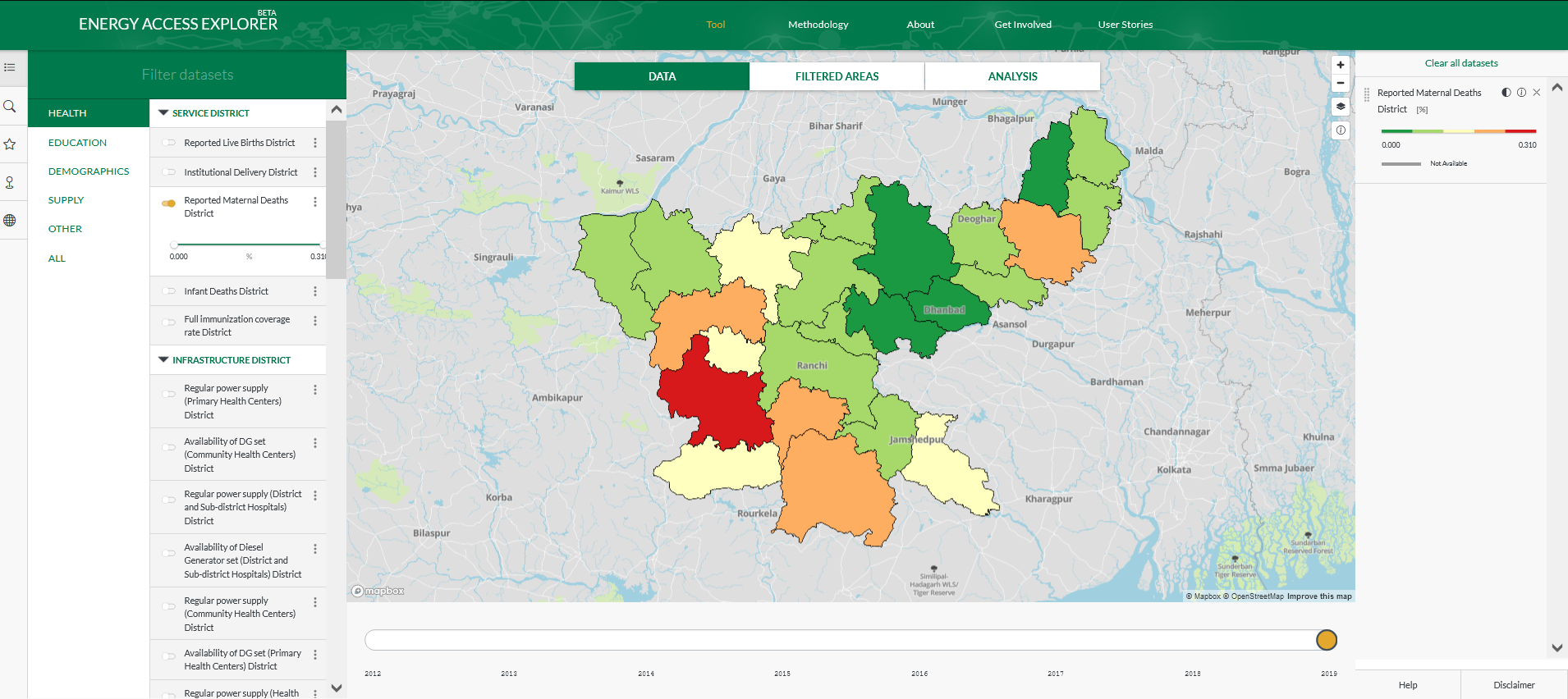
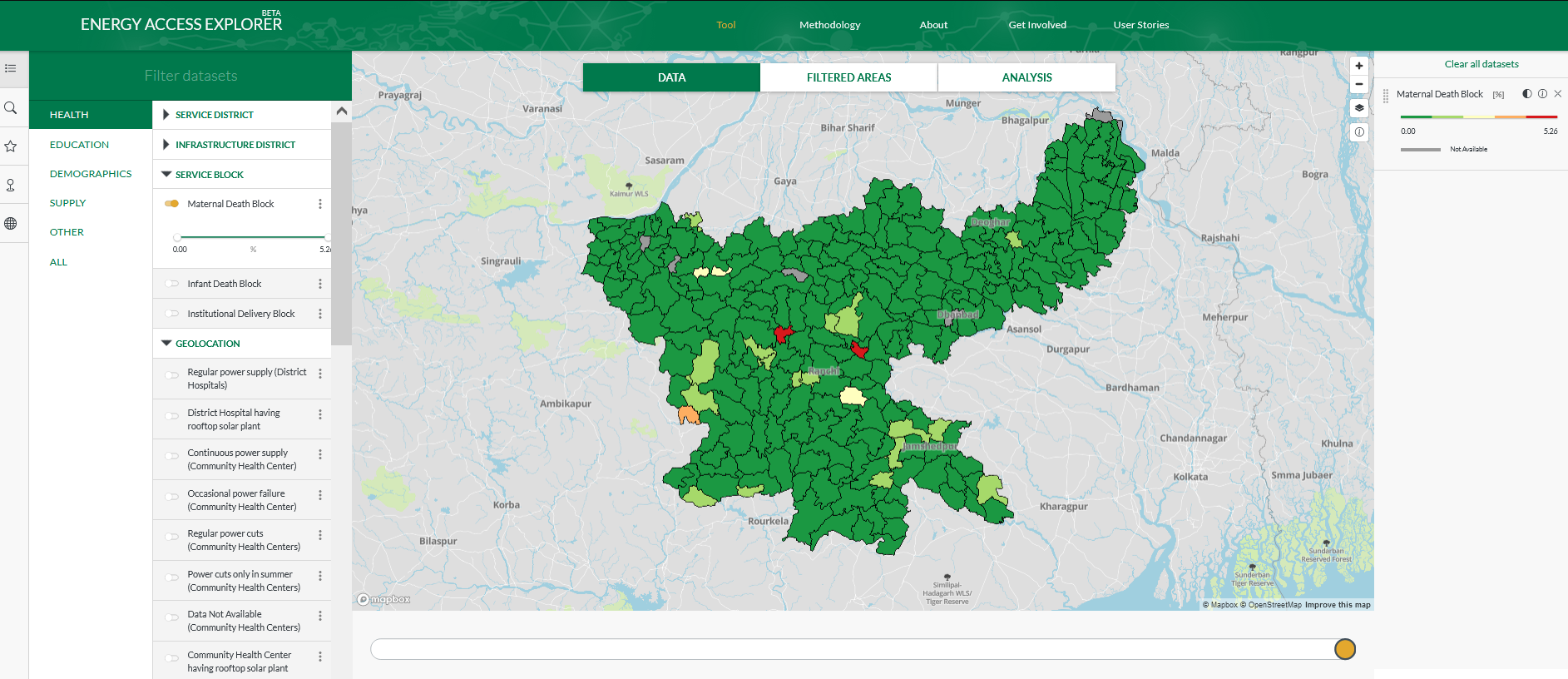
Out of the 169 SDG targets, energy is interlinked with 125 of them. This reiterates the relevance of electricity as a critical input to achieve SDGs.
Let us take one of the most important targets of SDG 3 on health—it deals with maternal deaths. This goal roughly translates to ensuring that maternal mortality is under 0.07 percent. EAE allows us to visualise this development indicator across geographic scales—as can be seen in Figure 3. This figure provides information at a district level, as well as at a more granular block level. EAE informs us that 99 out of 260 blocks have registered maternal deaths under the SDG threshold—. This does tell us that there is scope for improvement, but a further filtering functionality gives us granular data of well performing blocks.
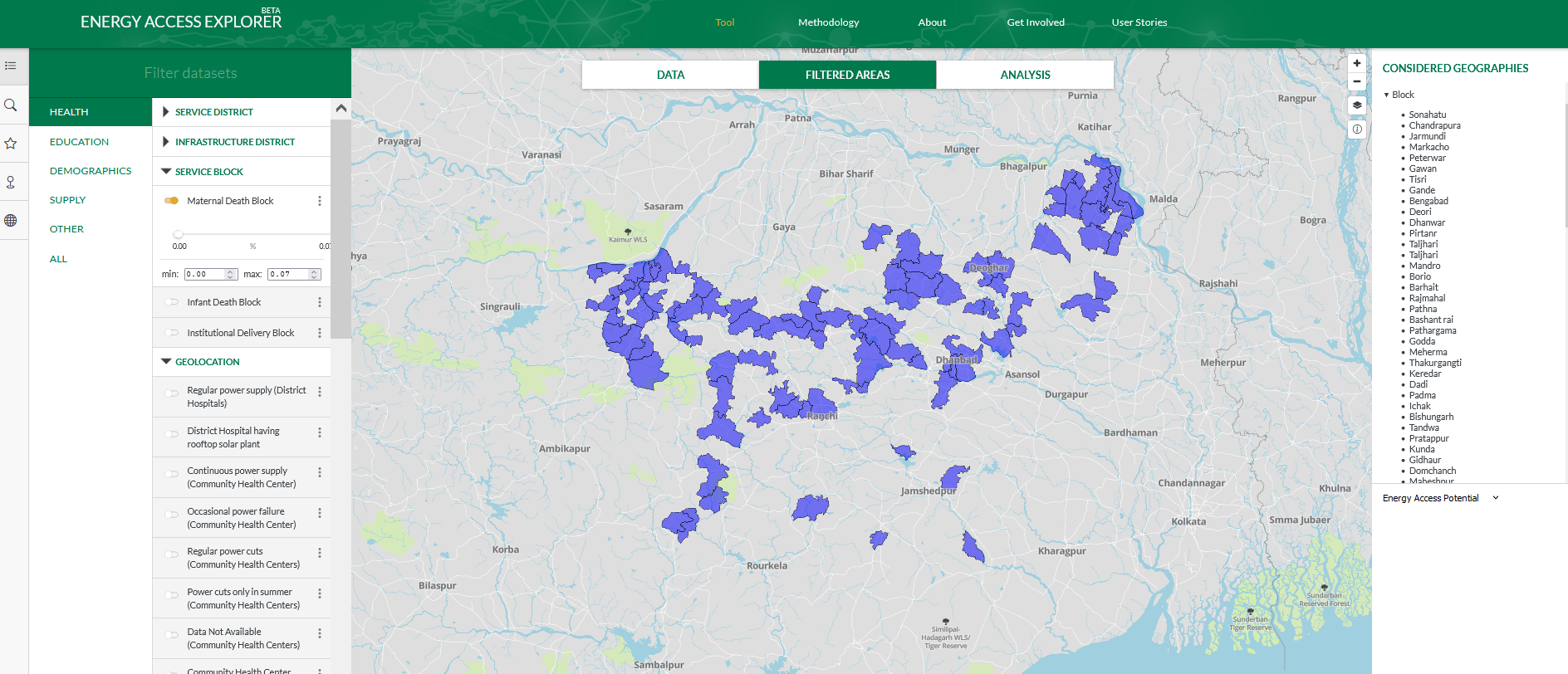
The quality of infrastructure in health facilities are crucial in determining maternal and child health indicators. Facilities, which are well lit with safe and hygienic sanitation infrastructure, are preferred by patients, especially women, as a cross sectional study demonstrates.
75% of community health centres with regular power cuts could consider solar PV as a back-up
So far, we have identified areas where regular power supply could improve service delivery. How do we contextualise the solutions? This is where the on-the-fly analysis that EAE allows us to conduct using multiple criteria, becomes relevant.
Let us demonstrate this by taking the locations of CHCs with regular power cuts, as an example. Let us focus further by looking within the proximity of up to 25 km from the CHCs.
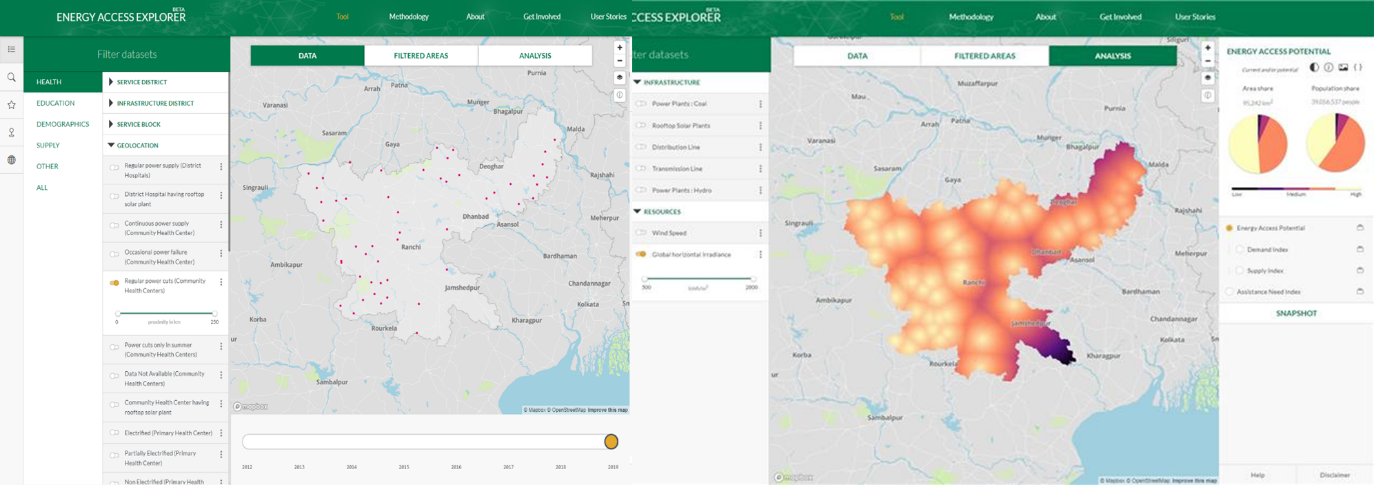
In the image above, the brighter areas demonstrate higher demand potential as they are emanating from the location of CHCs with regular power cuts—our category of interest. Can we consider complementing existing electricity supply with solarisation? Which of these locations will be more suitable for that?
To consider solarisation as a potential solution, we use the Global Horizontal Irradiance indicator. GHI is satellite data that measures the solar potential in an area and hence better informs us about ideal locations for installing solar PVs.
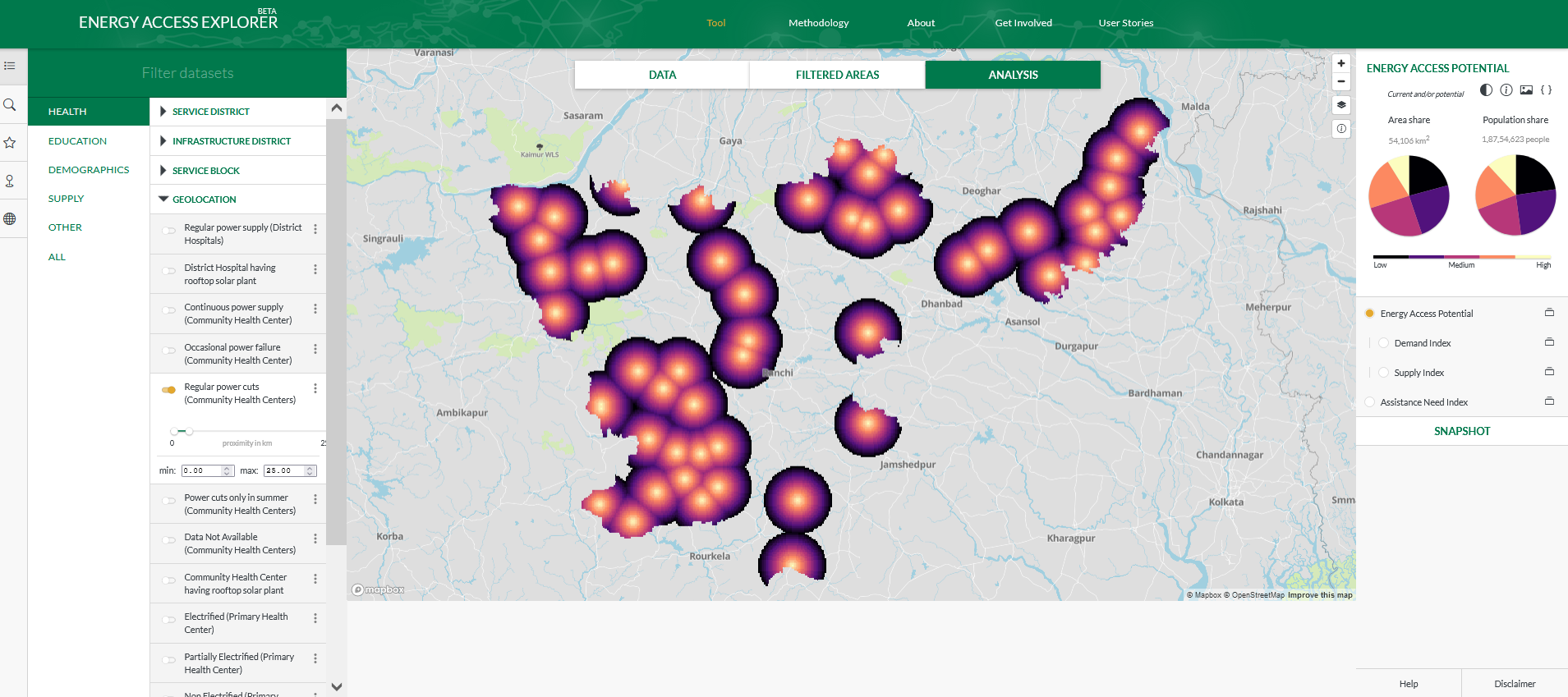
For this analysis, we filter regions with a GHI of greater than 1800 KWh/ m2 (square metre) which is considered ideal for solarisation.
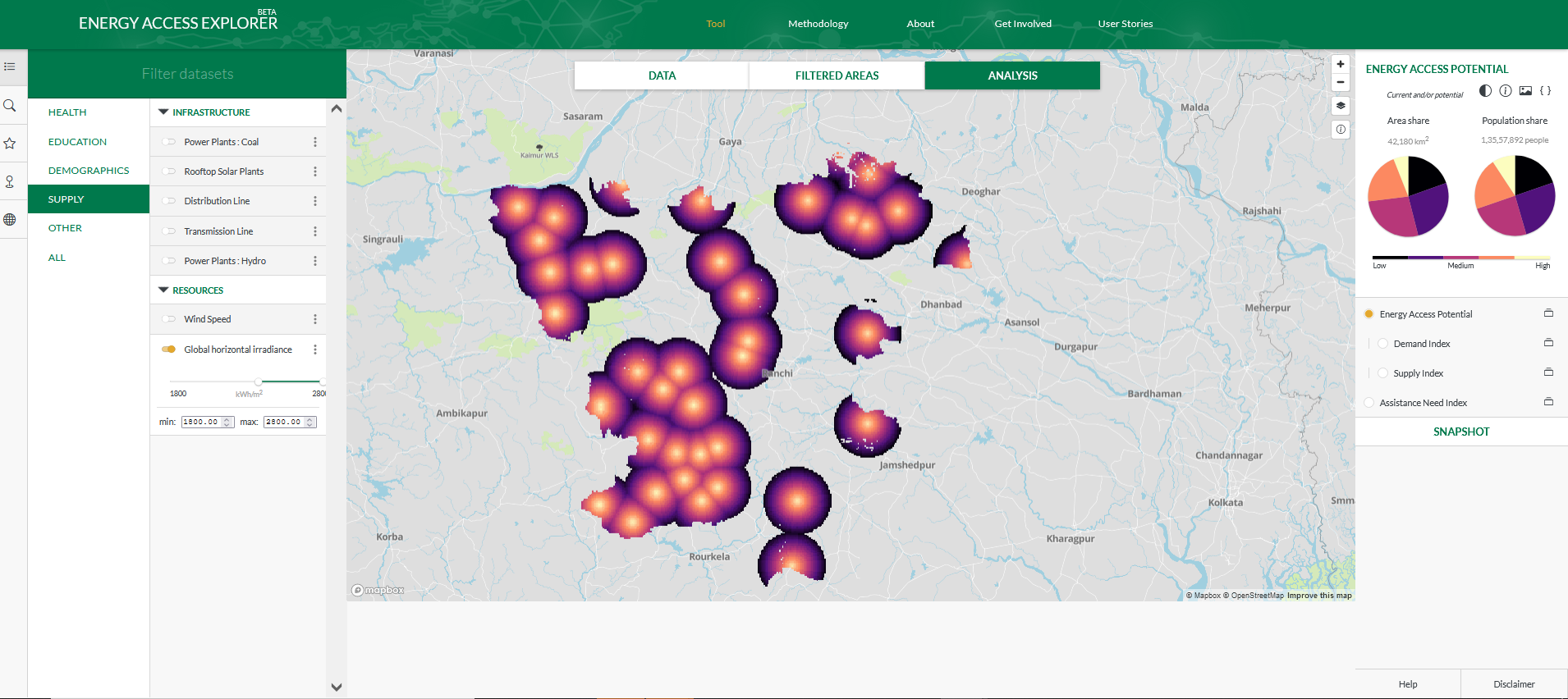
We now see that the western and central parts of the state are better suited to consider solar as a back-up for CHCs with regular power cuts. This means that 75 percent of CHCs with regular power cuts could consider solarization as an option to strengthen their electricity reliability.
These are a few instances of how EAE can visualize, analyse, and prioritise data to inform decision-makers across electricity and development sectors in Jharkhand. EAE’s efforts are unique in that it provides on-the-fly granular information across various kinds of indicators in a spatio-temporal format to accelerate developmental outcomes.
Energy Access Explorer for the state of Jharkhand in India was launched on 9 December 2021 in Ranchi.


